new posts in all blogs
Viewing: Blog Posts Tagged with: zambia, Most Recent at Top [Help]
Results 1 - 18 of 18
How to use this Page
You are viewing the most recent posts tagged with the words: zambia in the JacketFlap blog reader. What is a tag? Think of a tag as a keyword or category label. Tags can both help you find posts on JacketFlap.com as well as provide an easy way for you to "remember" and classify posts for later recall. Try adding a tag yourself by clicking "Add a tag" below a post's header. Scroll down through the list of Recent Posts in the left column and click on a post title that sounds interesting. You can view all posts from a specific blog by clicking the Blog name in the right column, or you can click a 'More Posts from this Blog' link in any individual post.
The low-light capabilities of modern cameras allow us to photograph wildlife in ways that would previously have been impossible. Over the last year or so, I have pushed my cameras to the limits in order to take striking images of nocturnal African animals.
To this end, I teamed up with African Parks and Norman Carr Safaris to undertake two expeditions to Liuwa Plain, a remote national park in the west of Zambia.
I planned to use a variety of techniques to photograph animals at night but not all of my set-ups were complicated. Simply by pushing the ISO up on my Canon 1DX and using a fast 400mm f/2.8 lens, I was able to photograph a pair of striped polecats (also known as zorillas) by the light of a dim spotlight and a group of reedbuck as they were backlit by flames of a bushfire.
Capturing the Stars
My first aim was to take images showings animals under the beautiful, starry sky — the night sky in Africa is simply spectacular! To achieve these shots, I would need a wide-angle lens and a ground-level perspective so that I could look up at the subject and have the sky as a backdrop. BeetleCam, my remote control camera buggy, would be the perfect tool for this.
I was going to achieve these shots in a single exposure, in-camera. To expose the stars, I would need to use a high ISO and a shutter speed of around 10 to 15 seconds. The animal would be exposed by a flash at the beginning of the exposure. No animal would stay still for the duration of the exposure but, as long as there was no moonlight, it wouldn’t matter; if the animal moved after the flash the animal would just block out light from the stars but it wouldn’t otherwise show up. I had to use manual focus and judge the distance between the camera and subject by eye as there wasn’t enough light to rely on autofocus.
On my first night in Liuwa I had the opportunity to use this technique to photograph the resident pride of lions. The resulting picture is one of my favourite from the entire project!
Later, I used this same technique to photographs lions at twilight. The only difference here is that I reduced the exposure time to balance the brightness of the sky with the flash.
Hyenas greatly outnumber the lions and are the dominant predators in Liuwa Plain. They are mainly nocturnal so they made ideal subjects for this project.
The shot below is another of my favourites. The “ghosts” appeared because the moon was up and it brightened the sky. Some of the hyenas moved after the flash and shadows formed when they paused to look at the camera.
I think these shots capture the spirit of these nocturnal animals in a way that isn’t possible when photographing them during the day.
Camera Traps
I also wanted to photograph some of the shyer nocturnal species. My Camtraptions camera traps were a perfect tool for this. I set one up at a waterhole and captured the image below of a porcupine drinking. To my surprise, it also snapped a zebra drinking in the middle of the night!
The Rains
I was in Liuwa for the end of the long dry season and the start of the rains. With the rain came large herds of wildebeest (Liuwa Plain is home to the second-largest wildebeest migration after the Serengeti).
Photographing animals in the rain at night gave me the opportunity to use another technique. I positioned an off-camera flash behind my subject and pointed it back towards the camera to backlight the raindrops. These shots were challenging because I had to place the flash and line up the shot without spooking the animals. I also had to compose and focus in complete darkness, while trying to keep the driving rain off my gear! Needless to say, I got very very wet!
The rains were accompanied by some epic lightning storms so I set myself the challenge of photographing an animal in front of a bolt of lightning. One evening I noticed a huge storm approaching so I went in search of a suitable subject.
I found a hyena and lined it up with the storm. I then took back-to-back long exposures hoping that a lightning bolt would eventually strike in the right spot and silhouette the animal. The hyena was moving so keeping it lined-up with the storm (again in the pitch darkness) was challenging but my perseverance was rewarded with the shot below.
So what next? Well there are many other creative ways that remote cameras and camera traps can be used to photograph wildlife at night! I will be exploring some of these in future projects.
If you are interested in learning more about these techniques then you can download my free guide to remote and camera trap photography at Camtraptions.
You can see more of my wildlife at night shots in this collection. You may also be interested in reading my WWF camera trap post and my supermoon eclipse post.

Last September I was in Zambia’s South Luangwa National Park. One morning, I was photographing lions on a kill when I noticed a giraffe over to my left. It was framed nicely by trees so I swung my lens round and took a few shots of it. Before long, the lions also noticed the giraffe and one of them chased it away. I continued photographing the lions and soon forgot about the giraffe.
Last week I finally got around to sorting through my photos from the trip. As I was scrolling through them on my big computer screen, I got to my shot of the giraffe and stopped in my tracks!
Can you see what I noticed?
I was completely stunned that I had managed to photograph a leopard without realising it! Leopards are usually very elusive and hard to see, so to photograph one by accident is quite incredible!
You may wonder how managed to not see the leopard at the time. Well, I was using a long telephoto lens, so the leopard is further away than it may appear. I only took a few images of the giraffe before turning my attention back to the lions, and in that time I obviously didn’t look carefully at the corner of the frame!
I am now wondering how many other leopards are hiding in images I’ve taken over the years!
You can see more leopard photographs in my Leopard Collection.


By: Jerry Beck,
on 12/16/2015
Blog:
Cartoon Brew
(
Login to Add to MyJacketFlap)
JacketFlap tags:
Anthony Silverston,
Afrofuturism,
Bru and Boegie,
Dropped,
Ian Tucker,
Kay Carmichael,
KC’s Super 4,
Kelly Dillon,
Lucy Heavens,
Malenga Mulendema,
Ninja Princess,
Pumzi,
Wormholes,
Supa Strikas,
The Camel Racer,
The Wild Waste,
Triggerfish Studios,
Wanuri Kahiu,
TV,
Africa,
Kenya,
Disney,
Feature Film,
Nigeria,
Lights,
Mike Scott,
Nnedi Okorafor,
South Africa,
Zambia,
Add a tag
After receiving nearly 1,400 submissions from across Africa, South African studio Triggerfish chose 8 projects for further development.
The post Triggerfish’s Story Lab Announces 8 African Winners appeared first on Cartoon Brew.
I am currently in South Luangwa National Park in Zambia. A month ago I found out I was going to be here during a “supermoon” total lunar eclipse. This would be the last opportunity to photograph such an occurrence for 18 years! I immediately set about planning how I could take a photograph of this phenomenon with an African twist.
My friends at Bushcamp Company kindly helped obtain permission from the Zambian Wildlife Authority to work in the national park at night.
At 2:45am this morning, I set out in search of subjects. I had a number of potential shots planned out but I knew I would need to remain flexible as I couldn’t control the opportunities that would present themselves.
I first went to where I had seen lions the evening before. On arrival, the lions had gone but I could hear their faint roars in the distance. I followed the sound through the African night and eventually found the lions just as the eclipse was starting.
There was only one tool that would allow me to frame the lions with the eclipse behind… my trusty BeetleCam!
I was after a shot of a lion under the blood moon. This was going to be a challenging shot to achieve for so many reasons! Balancing the foreground brightness with the dim red moon was an exercise in guestimation, as was trying to compose the shot in the pitch darkness. And of course, I had to do this while trying to avoid the pride of lions running off with my BeetleCam! However, I persevered and shortly before the moonset, this is the shot I managed to get…
A lion cub with the supermoon eclipse behind. Taken with a Canon EOS 5D mk III and 17-40mm f/4 lens on a BeetleCam. f/13, 8 seconds, ISO 3200. Off-camera flash triggered with Camtraptions Wireless Trigger. Plus approximately a month of planning and a spot of good luck 


By: Krista,
on 1/13/2015
Blog:
Sylvan Dell Publishing's Blog
(
Login to Add to MyJacketFlap)
JacketFlap tags:
Bangladesh,
Community,
Cuba,
Canada,
China,
Australia,
India,
Istanbul,
Indonesia,
Zambia,
Add a tag
It’s in the grip of North American winter that I often dream of escape to warmer climates. Thanks to the WordPress.com Reader and the street photography tag, I can satisfy my travel yen whenever it strikes. Here are just some of the amazing photos and photographers I stumbled upon during a recent armchair trip.
My first stop was Alexis Pazoumian’s fantastic SERIES: India at The Sundial Review. I loved the bold colors in this portrait and the man’s thoughtful expression.
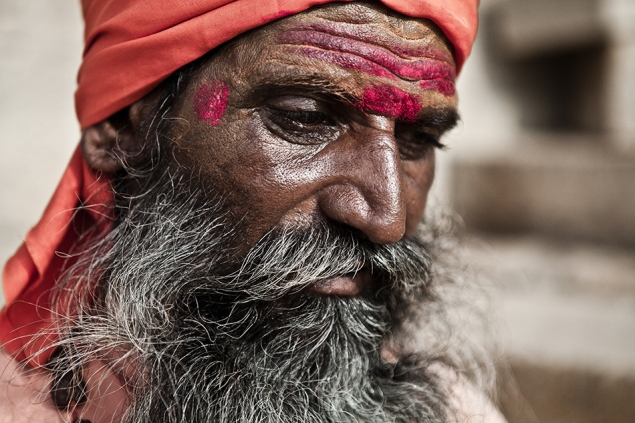
Photo by Alexis Pazoumian
Speaking of expressions, the lead dog in Holly’s photo from Maslin Nude Beach, in Adelaide, Australia, almost looks as though it’s smiling. See more of Holly’s work at REDTERRAIN.
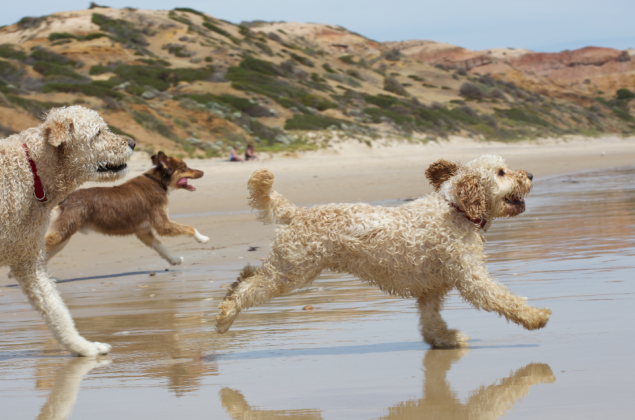
Photo by Holly
In a slightly different form of care-free, we have the muddy hands of Elina Eriksson‘s son in Zambia. I love how his small hands frame his face. The gentle focus on his face and the light in the background evoke warm summer afternoons at play.
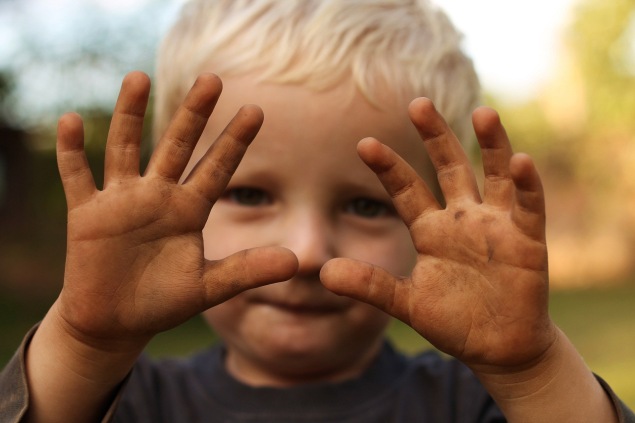
Photo by Elina Eriksson
Heading to Istanbul, check out Jeremy Witteveen‘s fun shot of this clarinetist. Whenever I see musicians, I can’t help but wonder about the song they’re playing.
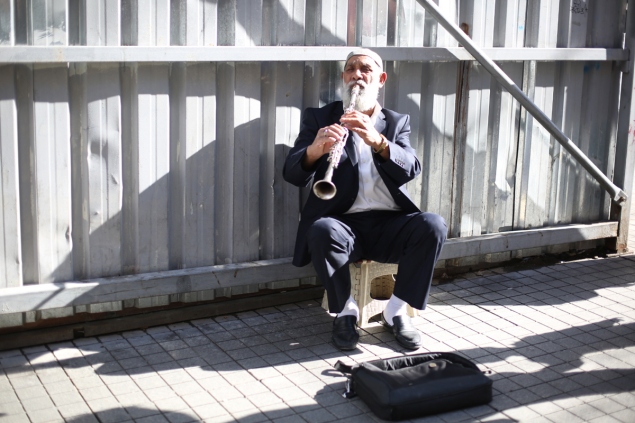
Photo by Jeremy Witteveen
Pitoyo Susanto‘s lovely portrait of the flower seller, in Pasar Beringharjo, Yogyakarta, Indonesia, captivated me. Aren’t her eyes and her gentle smile things of beauty?
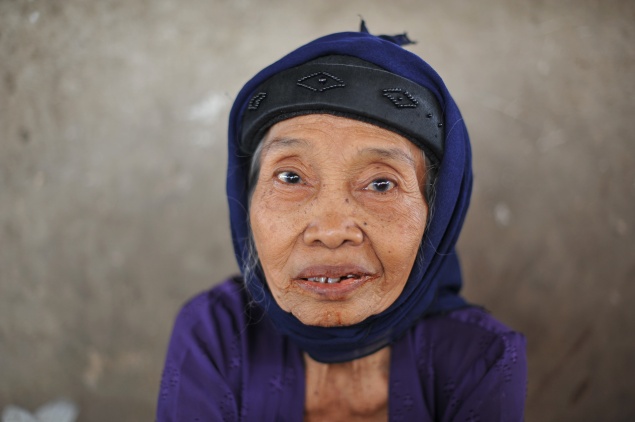
Photo by Pitoyo Susanto
Arresting in a slightly different fashion is Rob Moses‘ Ski Hill Selfie, taken in Calgary, Alberta, Canada. The juxtaposition of the bold colors and patterns in the foreground against the white snow in the background caught my eye.
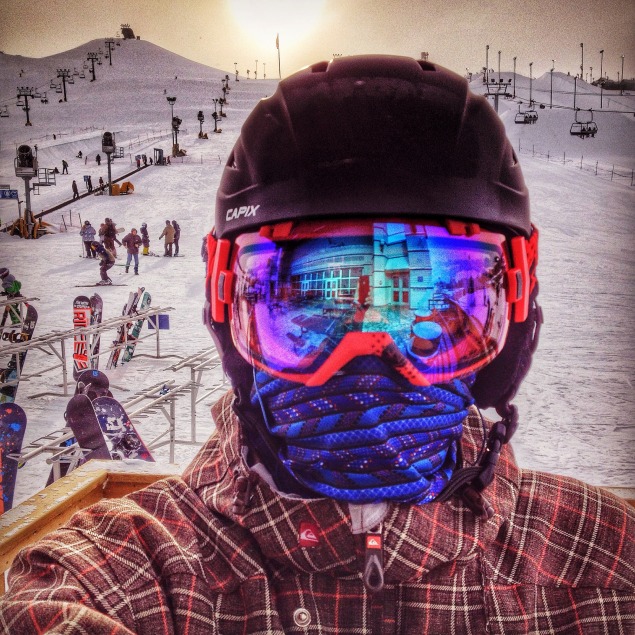
Photo by Rob Moses
Further under the category of fun juxtaposition, is Liu Tao’s photo of the elderly man in Hafei, China, whose fan reminds me of a punk rock mohawk.

Photo by Liu Tao
From Hafei, we go to Havana, Cuba, and Edith Levy‘s beautifully ethereal Edificio Elena. I found the soft pastels and gentle shadows particularly pleasing. They lend a distinctly feminine quality to the building.

Photo by Edith Levy
And finally, under the category of beautiful, is Aneek Mustafa Anwar‘s portrait, taken in Shakhari Bazar, Old Dhaka, Bangladesh. The boy’s shy smile is a wonderful representation of the word on his shirt.
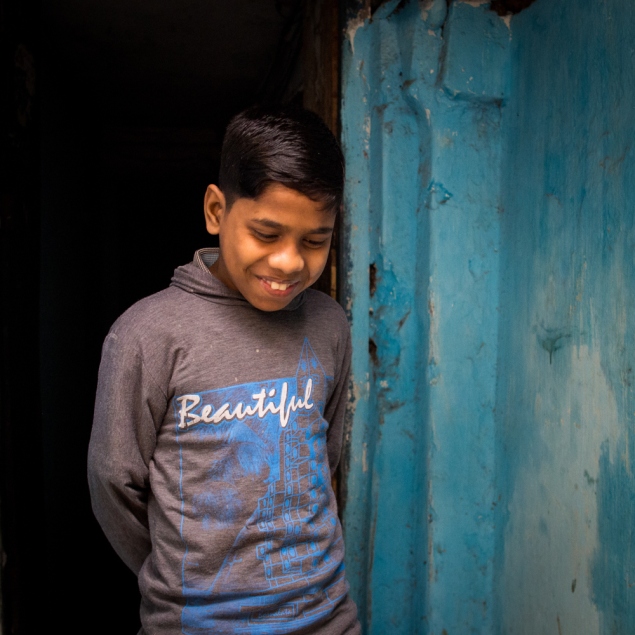
Photo by Aneek Mustafa Anwar
Where do you find photographic inspiration? Take a moment to share your favorite photography blogs in the comments.
Filed under:
Community 


By: Sara Pinotti,
on 7/16/2014
Blog:
OUPblog
(
Login to Add to MyJacketFlap)
JacketFlap tags:
africa,
Kenya,
Current Affairs,
databases,
economy,
tanzania,
zambia,
*Featured,
Business & Economics,
botswana,
economic growth,
morten,
economic measurement,
morten jerven,
national statistical office,
penn world tables,
the world bank,
jerven,
reconsideration,
Books,
Add a tag
By Morten Jerven
In most studies of economic growth the downloaded data from international databases is treated as primary evidence, although in fact it is not. The data available from the international series has been obtained from governments and statistical bureaus, and has then been modified to fit the purpose of the data retailer and its customers. These alterations create some problems, and the conclusions of any study that compares economic performance across several countries depend on which source of growth evidence is used.
The international databases provide no proper sources for their data and no data that would enable analysts to understand why the different sources disagree about growth. See, for example, the disagreement in economic growth series reported by the national statistical office, from Penn World Tables, The World Bank, and the Maddison dataset for Tanzania, 1961-2001.
The average annual disagreement between 1961 and 2001 is 6%. It is not evenly distributed; there is serious dissonance regarding growth in Tanzania in the 1980s and 1990s, and how the effects of economic crisis and structural adjustment affected theeconomy depends on which source you consult.
The problem is that growth evidence in the databases covers years for which no official data was available and the series are compiled from national data that use different base years. The only way to deal satisfactorily with inconsistencies in the data and the effects of revisions is to consult the primary source. The official national accounts are the primary sources.

The advantage of using the national accounts as published by the statistical offices is that they come with guidelines and commentaries. When the underlying methods or basic data used to assemble the accounts are changed, these changes are reported. The downside of the national accounts evidence is that the data is not readily downloadable. The publications may have to be manually collected, and then the process of data entry and interpretation follows. When such studies of growth are done carefully, it offers reconsiderations of what used to be accepted wisdom of economic growth narratives.
I propose a reconsideration of economic growth in Africa in three respects. First, that the focus has been on average economic growth and that there has been no failure of economic growth. In particular the gains made in the 1960s and 1970s have been neglected.
Secondly, for many countries the decline in economic growth in the 1980s was overstated, as was the improvement in economic growth in the 1990s. The coverage of economic activities in GDP measures is incomplete. In the 1980s many economic activities were increasingly missed in the official records thus the decline in the 1980s was overestimated (resulting from declining coverage) and the increase in the 1990s was overestimated (resulting from increasing coverage).
The third important reconsideration is that there is no clear association between economic growth and orthodox economic policies. This is counter to the mainstream interpretation, and suggests that the importance of sound economic policies has been overstated, and that the importance of the external economic conditions have been understated in the prevailing explanation of African economic performance.
We know less than we would like to think about growth and development in Africa based on the official numbers, and the problem starts with the basic input: information. The fact of the matter is that the great majority of economic transactions whether in the rural agricultural sector and in the medium and small scale urban businesses goes by unrecorded.
This is just not a matter of technical accuracy; the arbitrariness of the quantification process produces observations with very large errors and levels of uncertainty. This ‘numbers game’ has taken on a dangerously misleading air of accuracy, and international development actors use the resulting figures to make critical decisions that allocate scarce resources. Governments are not able to make informed decisions because existing data is too weak or the data they need does not exist; scholars are making judgments based on erroneous statistics.
Since the 1990s, in the study of economics, the distance between the observed and the observer is increasing. When international datasets on macroeconomic variables became available, such as the Penn World Tables, and the workhorse of study of economic growth became the cross-country growth regressions the trend turned away from carefully considered country case studies and then rather towards large country studies interested in average effects.
However, the danger of such studies is that it does not ask the right kind of questions of the evidence. As an economic historian, I approach the GDP evidence with the normal questions in source criticism: How good is this observation? Who made this observation? And under what circumstance was this observation made?
Morten Jerven is an economic historian and holds a PhD from the London School of Economics. Since 2009, he has been Assistant Professor at the School for International Studies at Simon Fraser University. He is author of Economic Growth and Measurement Reconsidered in Botswana, Kenya, Tanzania, and Zambia, 1965-1995 and has published widely on African economic development, and particularly on patterns of economic growth and economic development statistics.
Subscribe to the OUPblog via email or RSS.
Subscribe to only business and economics articles on the OUPblog via email or RSS.
Image credit: Tanzanian farmers, by Fanny Schertzer. CC-BY-2.5 S.A via Wikimedia Commons.
The post Why measurement matters appeared first on OUPblog.

So, here it is – not launched yet but a pre copy. I love it!
Release date 2nd May.
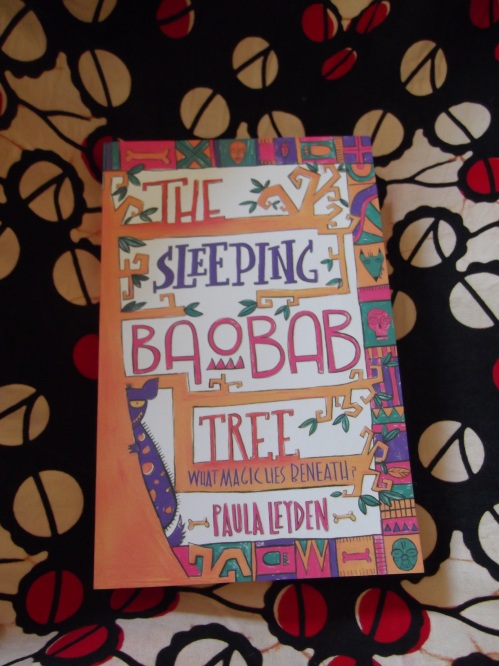
And here, with its older sibling!
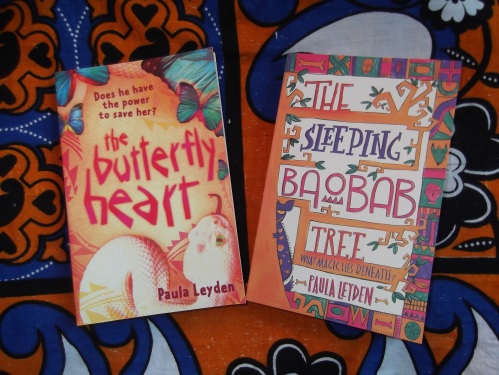

The young girls in this video speak for themselves far more eloquently than I could. Heartbreaking.

I have been thinking about teaching and learning for a while now – perhaps because we are nearing the end of school attendance with our own children, perhaps because of visiting so many schools in the past six months but perhaps because of this picture, which arrived in my inbox courtesy of Chipasha Luchembe from the Zambians in California community.
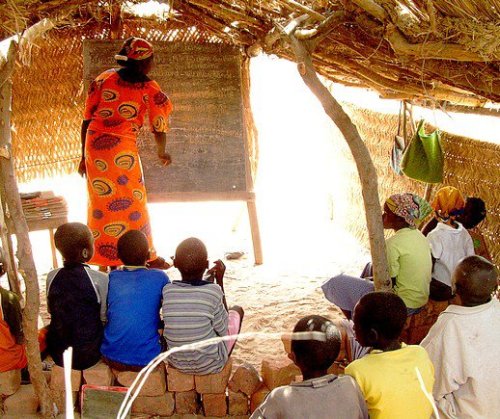
Perhaps because once upon a time I was a teacher.
It is a formidable responsibility that you take on when you stand in front of a class of ten, twenty, thirty, fifty or one hundred children and direct their learning, impart knowledge – educate them.
Confucius, a teacher himself, placed enormous emphasis on morality, self control and respect – and on study and discipline. One of his more famous quotes relates to this: “He who learns but does not think is lost. He who thinks but does not learn is in great danger.”
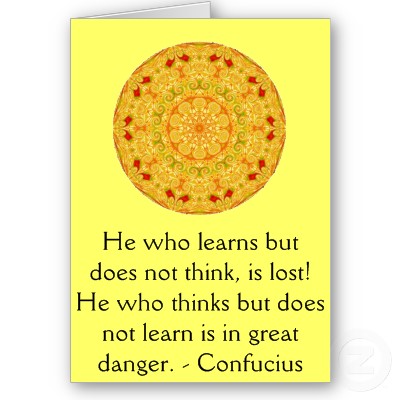
He did not in any way mean rote learning – his teaching was defined by its questioning nature, literally. He would ask students questions, pose problems and get them to arrive at the answer. As he himself said “I only instruct the eager and enlighten the fervent. If I hold up one corner and a student cannot come back to me with the other three, I do not go on with the lesson.”
One of the blessings of being a teacher is that you are given an opportunity to have a positive impact on the lives of those you teach, and likewise they can have a positive impact on your own life. It can be a rewarding, wonderful job. I remember being told of science teachers in Zimbabwe, many of whom had not been paid for months on end, travelling miles – some walking, some cycling, some in cars using up scarce diesel – to attend a Science Teachers workshop. Taking time they could ill afford in order to improve their skills in the classroom. There are many students who have a lot to thank those teachers for.
In looking up teaching in Zambia after seeing the picture that Prof Luchembe sent on I came across one of many inspiring stories. It is the story of teachers Mr. and Mrs. Maonde from Lilayi. They had both retired from teaching but began to teach children in their own home. They started with five pre-schoolers but by 2005 they had 200 pupils coming in shifts to their home to be taught.
The couple got in touch with teachers they knew in Canada and out of this an initiative called Friends for Zambia was started to raise funds to build a school in the area. The result is this.
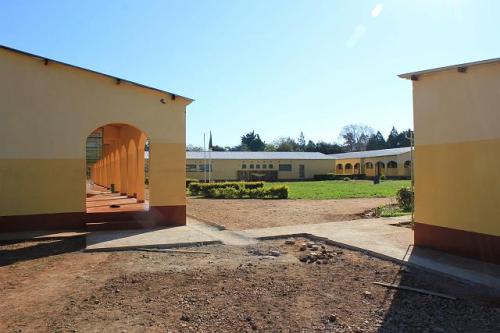
Twitti School in Lilayi
There are now 370 pupils in the school from kindergarten to Grade 9. Some achievement. All stemming from the dedication of two inspired Zambian teachers, Simon and Lydia Maonde and two inspired Canadian teachers who had taught as volunteers in Namwala Secondary School – the school at which Simon Maonde was headmaster!
Take a look at their website here

Read to the end of this post to find out how you could win an incredible Zambian safari for two worth over $12k!
Much has happened since my last South Luangwa post so a follow-up is long overdue! The dry season is now well and truly over. I will never forget 1st November, the day the rains arrived…
That day I awoke to find a veil of cloud had descended over the valley. There was a sense of anticipation as the parched earth and thirsty animals waited for the first raindrops to fall. However, there was also another cause for excitement that day; I had heard rumours that wild dogs had been spotted in the area! Ever since arriving in Zambia I had been searching for African wild dogs, a species that has always managed to evade me on previous trips. I set off in search of them, hoping that I wouldn’t be thwarted by the rain.
I found the pack after a couple of hours and enjoyed spending the rest of the morning with them. It was wonderful to watch them as they played around boisterously. After taking some shots with my long lens, I deployed BeetleCam. The dogs’ curiosity was instantly aroused and they crowded around the camera. I had always dreamed of photographing wild dogs from this perspective and the resulting shots were exactly what I had hoped for…
This was one of my last shots of the dry season… a few hours later, the heavens opened. Over the next 12 hours, 110mm of rain fell (approximately 10% of region’s annual rainfall)!
The bush camps have usually closed by the time the heavy rains arrive as the surrounding roads become completely impassable. However, this year the first deluge caught everyone off guard and as a result we were marooned in the bush for several days whilst we waited for the sodden landscape to dry out.
On the third day it was time to attempt an escape. This was easier said than done as the roads had turned into rivers of mud! Fortunately there was a four-wheel drive tractor on hand to tow me out of the boggiest areas. After several hours of battling mud we eventually made it out of the park. The next challenge was going to be cleaning my car!
Emerald Season
Over the following days and weeks, South Luangwa underwent a radical transformation; the hazy atmosphere and dusty colours of dry season were replaced with beautiful clear light and vibrant greens. Watery lagoons and lush plains appeared in areas that had been dust bowls a few weeks earlier.
Now the “Emerald Season” is here and the valley seems to be bursting with life. The herbivores are fat and healthy and baby impalas have taken over the valley. Times are also good for Luangwa’s leopards as the dense bush and tall grass afford plenty of cover for hunting. The cats stand out beautifully against the verdant backdrop.
Dazzling jewels also stud the greenery as colourful migrant birds arrive and residents flaunt their breeding plumage…
…and there are kingfishers everywhere!
River Safaris
In the last few weeks, the Luangwa River has risen enough to make river safaris possible. This has allowed me to photograph the park from a different perspective. Exploring the river by boat has also bought me face to face with some truly monstrous crocs!
Luangwa is famous for the astonishing density of hippos that it supports and the boat was forever dodging them as we cruised up and down the river.
On one occasion, we came round a corner to find a newborn baby hippo and its mother on a sandbank. We cut the engine so that we could drift past quietly. I had my lens focussed on the adorable baby when I became aware of a frantic pattering noise emanating from my right. I swung my lens round and was greeted by a terrifying sight… an angry mother hippo in full charge. We had no time to start the engine and escape. Fortunately she stopped a few metres away and we were able to beat a hasty retreat!
Win a Safari!

I have partnered with Norman Carr Safaris, Chongwe Safaris and Proflight Zambia to bring you an incredible new holiday giveaway! This is your chance to win a luxury 8-day safari for two in Zambia worth over $12k! You will start by spending 4 nights with Norman Carr Safaris in South Luangwa National Park and then fly down to Lower Zambezi National Park for 4 nights with Chongwe Safaris! Whether it’s tracking lion on foot, catching (and releasing) a tiger fish, photographing the elusive leopard, or sipping a cool gin and tonic overlooking the river, you’re guaranteed to create lasting memories as you switch off from the rest of the world.

Have just posted in the Reviews section a review that was sent on to me by the Lubuto Library Project , written by a volunteer who was working with the library in Lusaka. It brings to mind a library I have written about a few times on the blog, the Nkhanga Village Library. It was officially opened on December 8th 2012 and it now has 3,798 books with a capacity for many more.
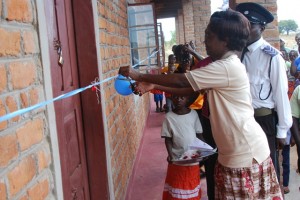
Congratulations to Prof. Mwizenge Tembo and all of those who worked to make this dream a reality. I am sure that many hours of pleasure and learning will be had under its roof.
More details on Prof. Tembo’s website and in Rainbow News

BBC Documentary on Mosi-oa-Tunya, the Victoria Falls, in Zambia. Some incredible footage of the mighty Zambezi River accompanied by the story of those whose homes are near its banks and who depend on it for their livelihood.

At Midnight on October 24th 1964 Zambia became independent. So, Happy Independence Day Zambia!
My brother John Leyden was born in Kitwe, Zambia in the year of Zambia’s independence so here’s a song for Zambia from his band Mango Groove. The song when it was written was dedicated to Spokes Mashiyane, known as the King of Kwela. But for today I feel like dedicating it to Zambia, a Special Star.


So this is my first proper post from Africa! I have been in Zambia for two months and I’ve been keeping myself busy! August was taken up with buying a capable 4×4 and moving into our new house in Katete. Once set-up I was then able to get on with the important task of photographing some wildlife!
In September I was able to make several trips up to South Luangwa National Park, courtesy of two of Zambia’s leading safari operators – The Bushcamp Company and Norman Carr Safaris. My aim for this year is to document the changing face of the park through the seasons. September is the height of the dry season. Animals are forced to congregate near the permanent water sources such as the Luangwa River and the few remaining waterholes. As a result, the pickings for the predators are plentiful.
The Luangwa Valley is well known as one of the best places in Africa to see the elusive leopard and it wasn’t long before it had lived up to its reputation; on my first visit to the park, I came across a mother with two 9-month-old cubs in daylight. This was the first time I’d had the opportunity to photograph a leopard with BeetleCam so I immediately deployed it.
The leopard cubs responded rather like the lion cubs from previous encounters – they were bold and inquisitive. Fortunately, they were slightly more respectful than their lion counterparts and I was spared the sight of my BeetleCam being carried off into the bush or up a tree!
On my next visit to the park, I headed further north. There I found some incredible old ebony groves. The towering black trunks, green canopy and carpet of fallen leaves reminded me of an enchanted forest rather than a habitat I expected to find in Africa. By a stroke of good fortune, I came across a pride of lions in one such grove and used BeetleCam to take the image above of a lioness in this unusual habitat.
Next, I ventured further into the interior of the park, to a camp on the seasonal Luwi River. Here there is a permanent lagoon, which is the only source of water for many miles. This lagoon is stuffed full of crocodiles and hippos. During the day, the crocs haul themselves out of the water to bask in the sun. I decided to try and get a BeetleCam perspective of a croc emerging from the water. This turned out to be more difficult than expected… the crocs were very wary of BeetleCam and refused to come anywhere near it. Eventually, after several days of perseverance, I managed to the shot I wanted using a camouflaged remote camera.
September is the month that thousands of carmine bee-eaters arrive in the valley to start building their nests in the banks of the Luangwa River. They form large, vibrant colonies, which add a dazzling splash of colour to the muted tones of the dry season.
Over the final weekend of the month, I headed down to a remote camp on the banks of the Kapamba River. Here the local pride of lions consists of two lionesses and five large cubs. At this time of year herds of buffalo, puku and impala have no choice but to congregate near the river and the lions take full advantage of the situation. In one afternoon I watched them take down two impala in the space of a minute. It all happened less than 50m away and it wasn’t long before BeetleCam was on the scene, inching towards five ravenous cubs and the rapidly disappearing antelope.
September flew by and was full of excitement and photographic opportunities. I have really been enjoying the freedom that comes from having my own vehicle and exploring the vast African wilderness on my own. It is also very refreshing to have the luxury of time to really become familiar with an area and its wildlife.
As September progressed, the days grew hotter and hotter, a trend that will continue through October until the first rains bring some relief at the end of the month. After the first downpour, the valley will change completely, almost overnight; the air will clear, dramatic skies start building up overhead and everything will turn green. The impalas will all give birth in the space of a few days and migratory birds will start to arrive from far and wide. I can’t wait to document the transition into wet-season. If you would like to follow my year in Zambia, please subscribe to my email newsletter. I am also regularly posting my latest photos on Facebook, if you would like to receive my updates, please “like” my page.

Anyone from Africa, or who has travelled in Africa, will have come into contact with the exquisite fabrics that have emerged from this continent. East to West, North to South, the colours and patterns on the cloth reflect the warmth of the sun and the richness of the earth.
In Zambia these cloths are called Chitenge and I feel privileged enough to have some (courtesy of Mwanabibi Sikamo who is the Founder of Bibusa - which produces quality handmade goods from Africa. She also writes the blog Uprooting the Pumpkin.)
Below is a picture of one of my chitenge which currently brightens up my filing cabinet!

My chitenge filing cabinet
In Kenya, where I was born, the cloths which are worn by women in a variety of ways are called Kanga. Kanga in Swahili means Guinea Fowl and the story goes that in Zanzibar, where these cloths first emerged, they were named for the guinea fowl because of their bright speckled patterns.
For me the most fascinating thing about the kangas is that each one bears a message; sometimes a Swahili proverb, sometimes a political slogan, sometimes a very personal message from the giver to the receiver. These messages are known as Jina and they are many and varied. Short and to the point, they carry a whole lot of meaning. They are given by mothers to daughters, friends to one another, children to mothers, husbands to wives etc. And the meaning matters. For me it is such a wonderful tradition, a beautiful gift with a message on it that you have to puzzle out.
If you want to read more, this site has a very good list of just a few of the jina found on kangas.
While I was reading up about them I came across an interesting tale (recounted by Wener Graebner) which demonstrates so clearly how these jina can be used. A young Tanzanian girl recounted how she became engaged to a German man and that in her area this caused much talk. She bought herself two kangas: on the one was the message – Wasemao na waseme – Let them talk who want to talk; on the other was written, Moyo ndiye muamuzi – Only the heart decides. She reported that the talk soon stopped once she appeared wearing these.
Here is a photo of some of my own kanga. They would look better under the African sun!
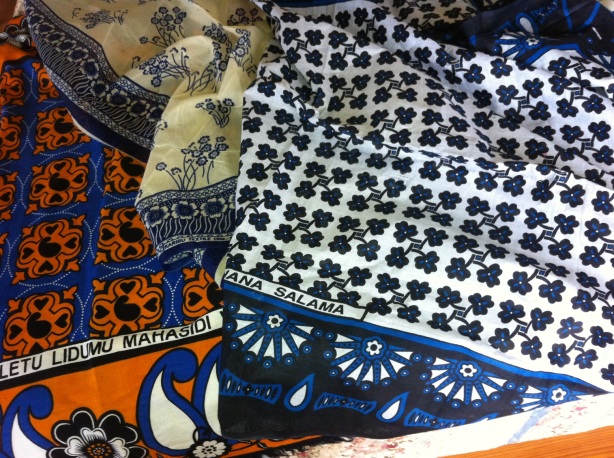




An abiding memory for me from childhood is the sight of branches weighed down by the nests of the Weaver birds. These birds are found all over Sub Saharan Africa and there are many varieties of them. The ones in Zambia would build nests like these ones below, and as children we always loved finding a nest that had been discarded. Perhaps it had not met the standards of a fussy female and she had rejected it in favour of another. A colony of these weavers is a noisy affair, the males, who build these very complex structures, make their presence felt. They sound almost as if they’re squabbling!


A Masked Weaver
You can see from the pictures above that the birds build their nests close to one another, but in Namibia they go a step further. The Sociable Weavers who live in Namibia build entire structures. A little like the termites who build huge mounds together, these birds build huge apartment blocks in the trees.
Here is a short clip with David Attenborough about this phenomenon (excuse the ad, nothing I can do about it!)









By:
Aline Pereira,
on 11/11/2008
Blog:
PaperTigers
(
Login to Add to MyJacketFlap)
JacketFlap tags:
Children's Books,
Young Adult Books,
literacy,
India,
Eventful World,
South Africa,
The Tiger's Bookshelf,
Book Chat,
Cambodia,
Room to Read,
W Authors,
L Title,
John Wood,
Laos,
Leaving Microsoft to Change the World,
Sri Lanka,
Zambia,
Add a tag

Sometimes the simplest remark can be the most transforming. “Perhaps, sir, you will come back with books,” a Nepalese headmaster said to John Wood, a vacationing Microsoft employee, as they stood in a school library that had twenty books that “were all backpacker cast-offs.” Haunted by the thought of children who might never know the joy of reading, Wood returned home and spent a year gathering children’s books. He went back to the headmaster with 3,000 volumes and a new direction for his life. John Wood decided that bringing books to children who have none was his vocation and Room to Read was born, as he tells readers in Leaving Microsoft to Change the World.
Wood put together an organization with staff who share his dream and his passion, aided by a fundraising network of more than 3,000 people. The core programs of Room to Read are the Reading Room which has built 5,600 libraries, Local Language Publishing which publishes and distributes books written both in English and the local language, the School Room which works with local communities to build schools with 444 in use, the Room to Grow Girls’ Scholarship that enables 4,000 girls to complete their secondary education, and the Computer and Language Room which builds computer and language labs.
Found in India, Sri Lanka, Zambia, South Africa, Vietnam, Laos, and Cambodia, Room to Read is vitalized by donations and volunteers, who have discovered how they can help by going to www.roomtoread.org. All share a common goal—to have built 10,000 libraries by 2010.
Scheduled half-day visits to a Room to Read site are welcome with advance arrangement.
One man, one dream, 3,000 books– one optimistic remark changed a life and consequently thousands of lives are being changed through the power of reading and the joy of literacy, all over the world.
































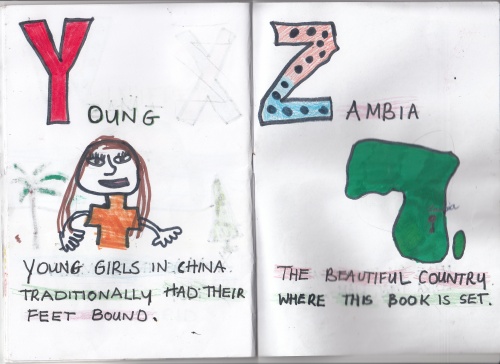
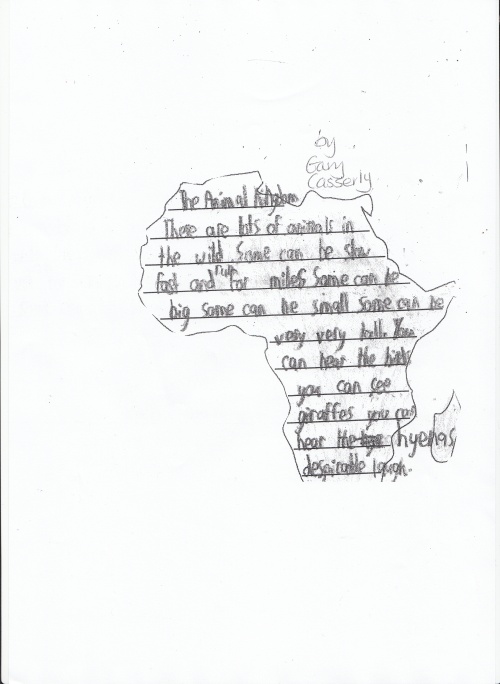
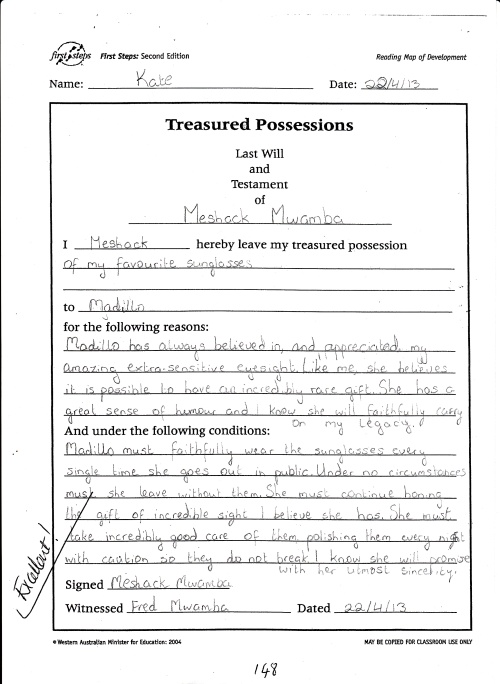
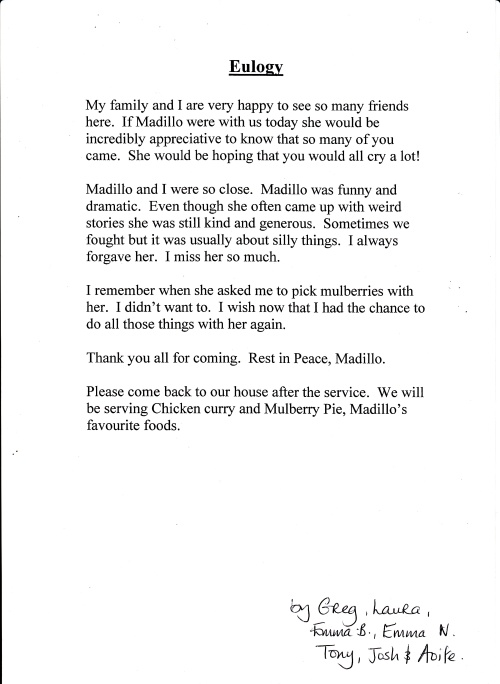
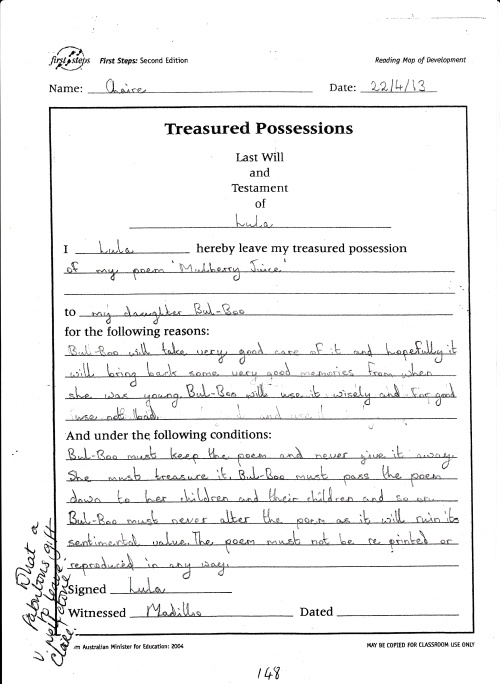

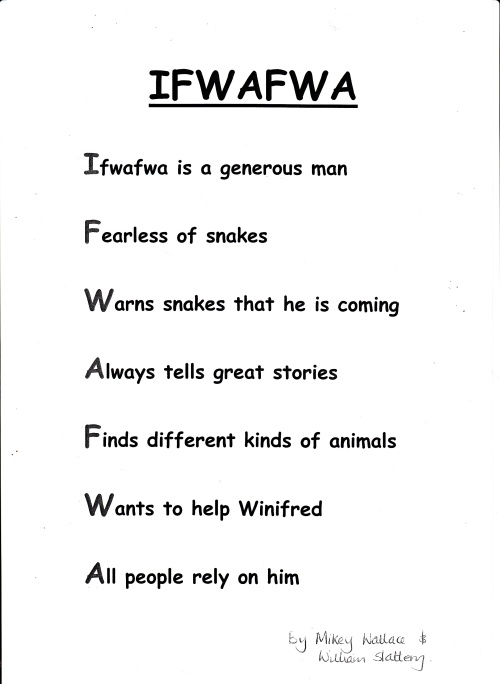
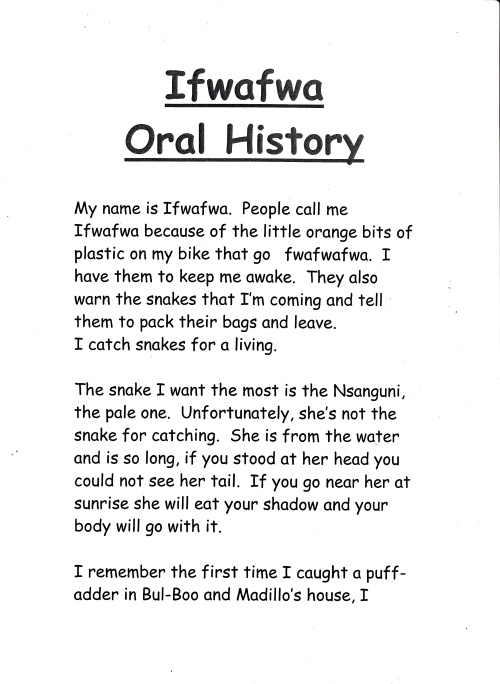
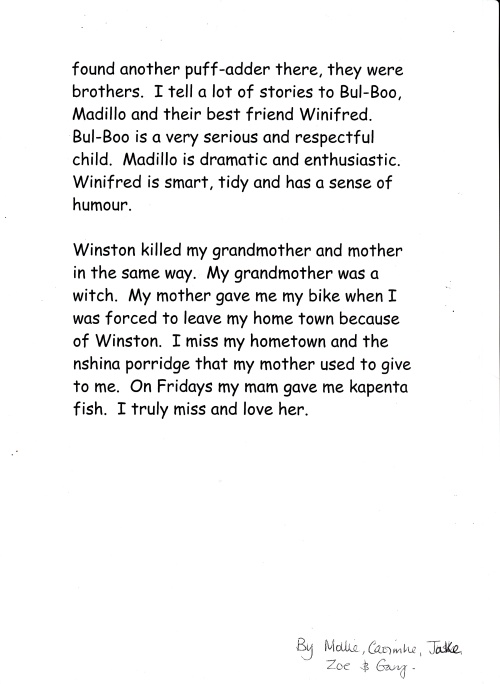




































Wonderful post.
LikeLike
Absolutely stunning!
LikeLike
Great pics! They’re stunning photos!
LikeLike
Thanks! That was a nice armchair-trip!
LikeLike
The last photo is my favorite! :)
LikeLike
Krista, The words used to describe each photo made them even more sensitive and communicative. Thanks.
LikeLiked by 1 person
Your kind words have made my day. I’m humbled. Thank you!
LikeLike
I’m fond of that photo too. I can’t help but wonder why he’s smiling. Such a lovely portrait.
LikeLike
Thanks for sharing my picture :)
LikeLike
You’re welcome Rob — I really enjoyed visiting your site.
LikeLike